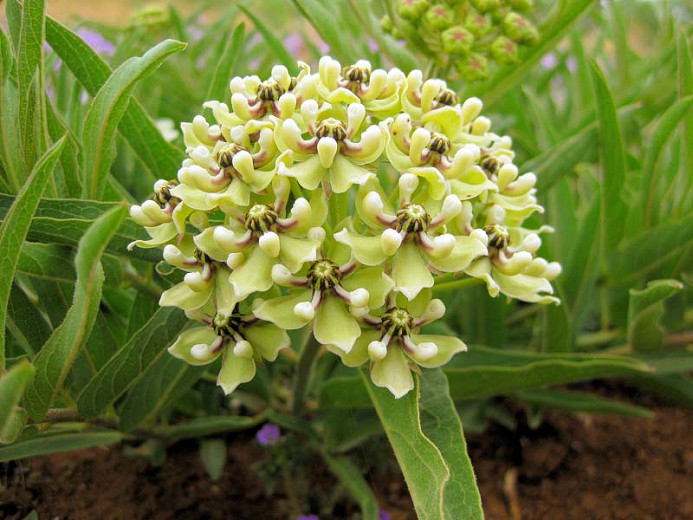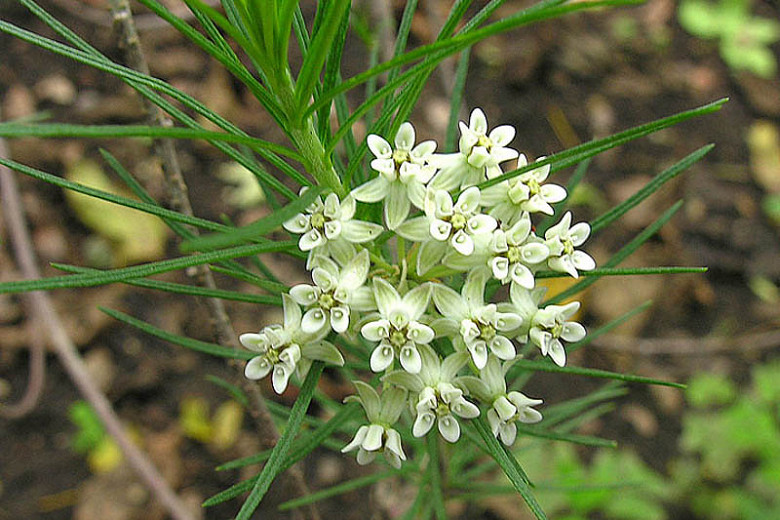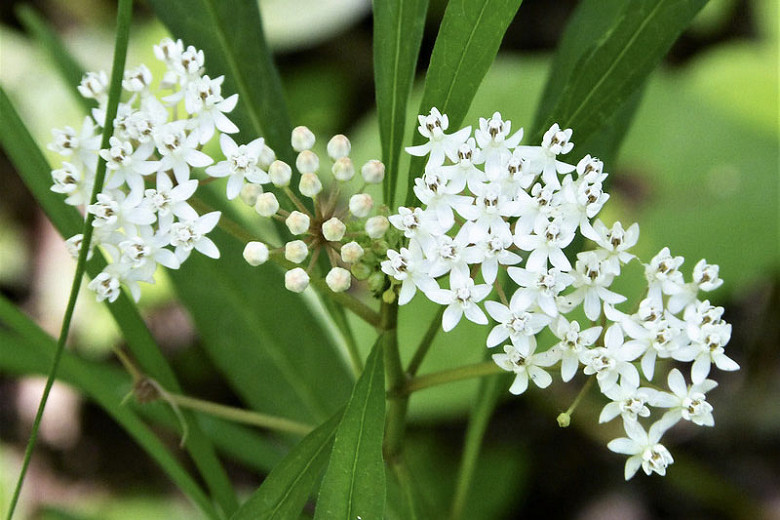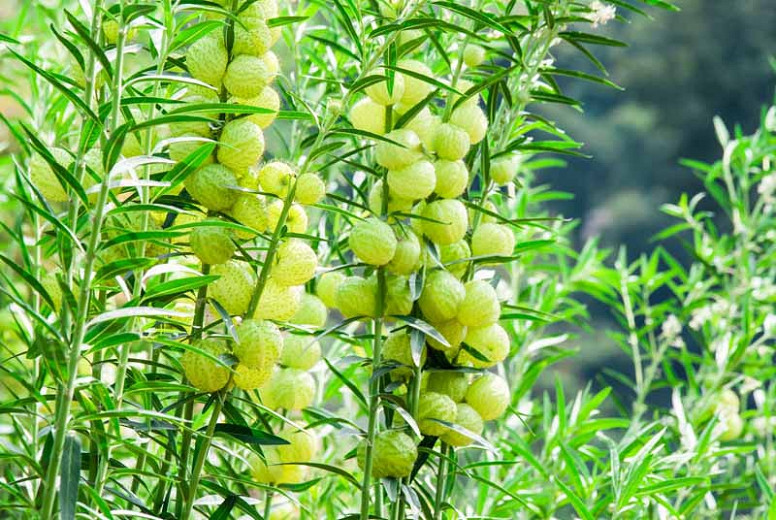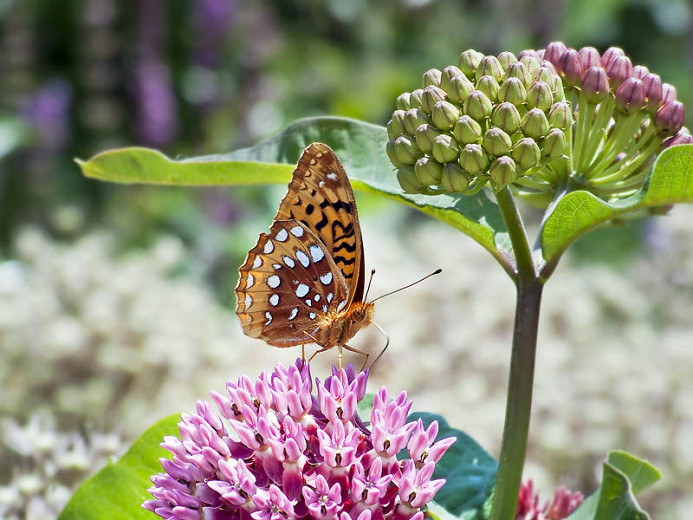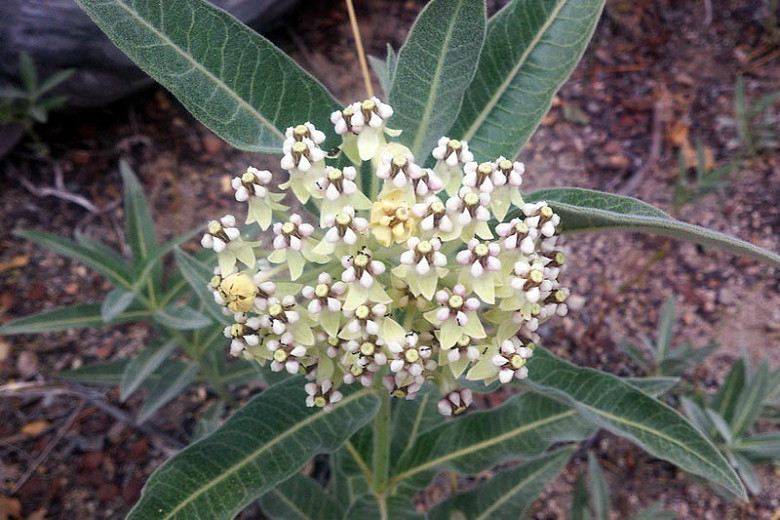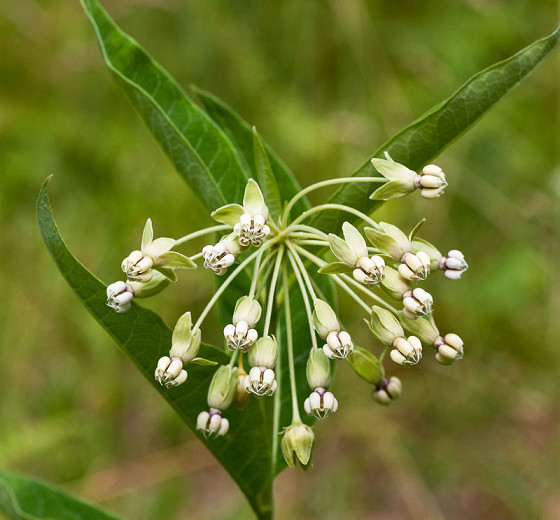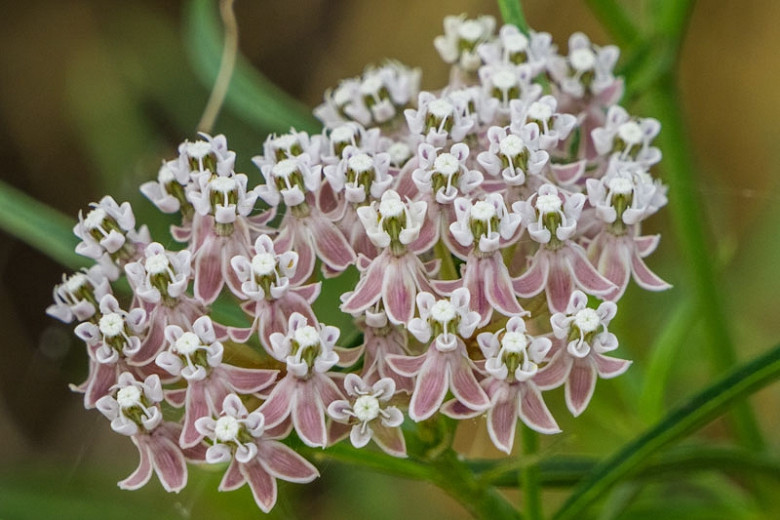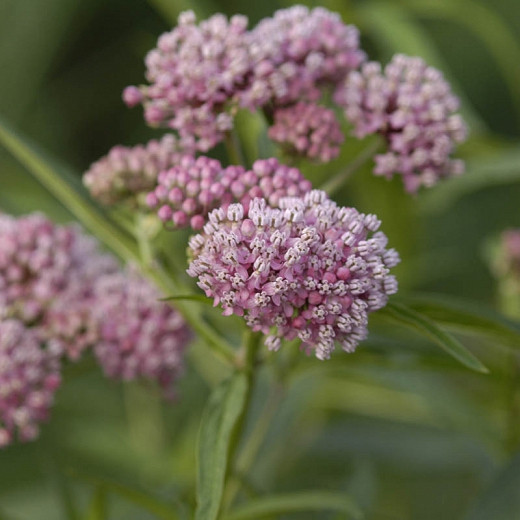Asclepias asperula (Antelope-Horns Milkweed)
Asclepias asperula (Antelope-Horns Milkweed) is a clump-forming perennial of upright or sprawling habit, boasting amazingly intricate, rounded clusters, 2 in. across (5 cm), of tiny flowers, each adorned with 5 upright pale green petals that cup upward over 5 white hoods. Blooming from spring to fall, the flowers are borne atop sturdy stems that are densely covered with minute hairs. They contrast with the foliage of long, narrow, bright green leaves, often folded lengthwise. Flowers are a great source of nectar for butterflies, hummingbirds, bees, and other beneficial insects. They give way to green seed pods, which curve to resemble antelope horns. When the seed pods are ripe, they will appear to be a herd of antelopes resting out among the grasses, weeds, and wildflowers. A great choice for the flower garden and for natural settings. Milkweed plants are critical to monarch butterflies' survival, whose population in North America has plummeted by 90% in the last 20 years. By planting milkweed in your own garden, you can help reverse the fortune of these beautiful insects!
- Grows up to 2 ft. tall (60 cm) and 3 ft. wide (90 cm).
- Thrives in full sun in dry to medium well-drained soils. Prefers rocky or sandy soils but adapts to wet or dry soils. Drought tolerant.
- Low maintenance, this perennial plant is generally pest and disease free. Deer resistant.
- Perfect for sunny borders, cottage gardens, butterfly gardens, and prairies or naturalized areas.
- Propagate by seeds, root cuttings.
- Milkweeds contain cardiac glycosides, naturally occurring drugs that increase the force of heart contraction and have been used to treat heart conditions. The cardiac glycosides are potentially poisonous to humans. But they pose the most danger to grazing animals. However, it should be noted that not all milkweed species are equally toxic. Among the most toxic are Asclepias labriformis (Labriform Milkweed), Asclepias subverticillata (Western Whorled Milkweed), Asclepias eriocarpa (Woolypod Milkweed) and Asclepias fascicularis (Mexican Whorled Milkweed).
- Toxic to dogs, toxic to cats, toxic to horses.
- Native to the southwestern United States and northern Mexico
Requirements
| Hardiness | 7 – 9 |
|---|---|
| Plant Type | Perennials |
| Plant Family | Asclepias |
| Exposure | Full Sun |
| Season of Interest | Spring (Mid,Late)Summer (Early,Mid,Late)Fall |
| Height | 1' – 2' (30cm – 60cm) |
| Spread | 2' – 3' (60cm – 90cm) |
| Spacing | 36″ (90cm) |
| Water Needs | Low, Average |
| Maintenance | Low |
| Soil Type | Chalk, Clay, Loam, Sand |
| Soil pH | Acid, Alkaline, Neutral |
| Soil Drainage | Well-Drained |
| Characteristics | Showy |
| Native Plants | United States, California, Midwest, Kansas, Nebraska, Pacific Northwest, Idaho, Rocky Mountains, Colorado, Utah, Southwest, Nevada, Arizona, New Mexico, Oklahoma, Texas |
| Tolerance | Deer, Drought, Dry Soil, Rocky Soil |
| Attracts | Bees, Birds, Butterflies |
| Garden Styles | Informal and Cottage, Prairie and Meadow |
